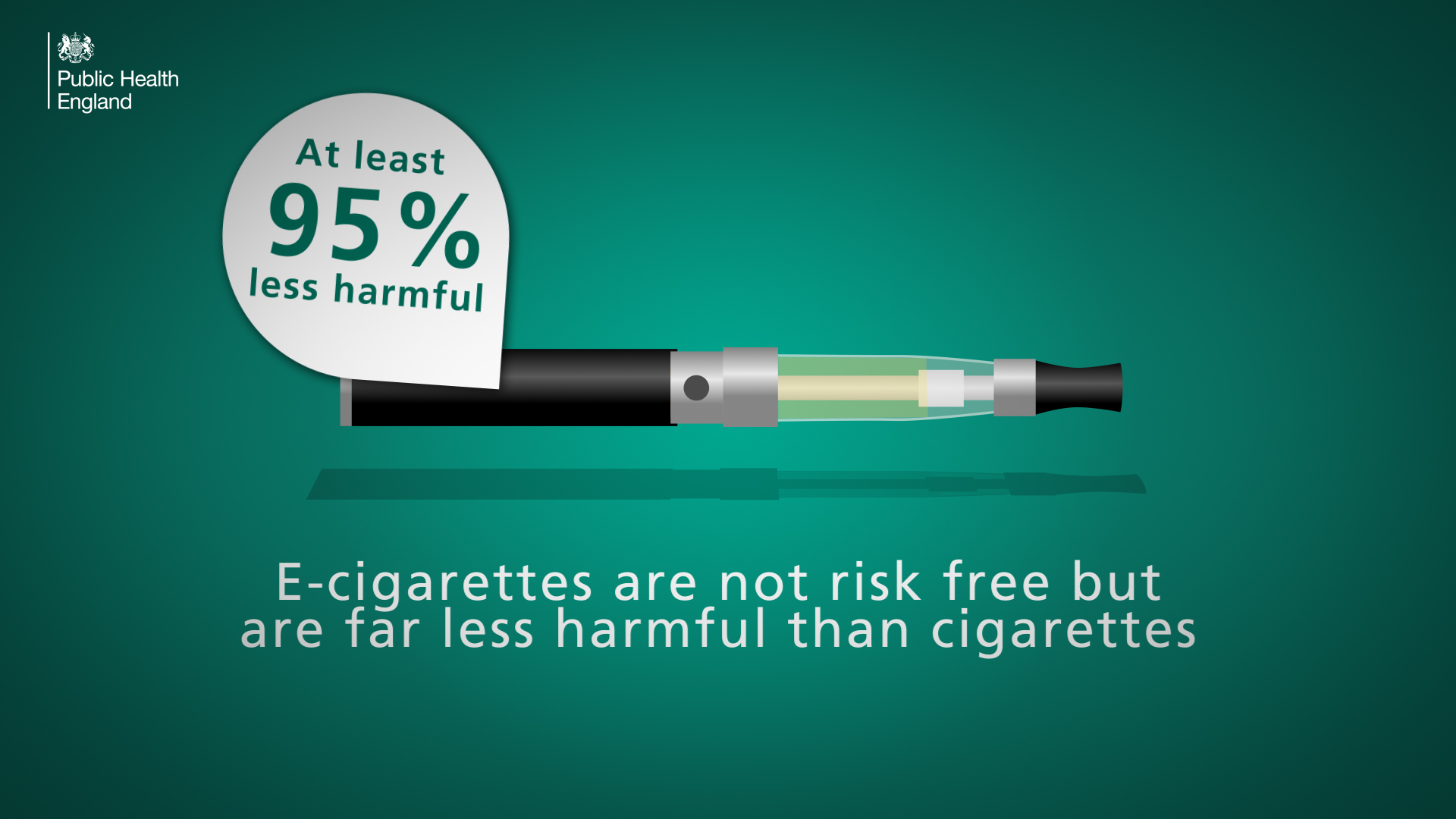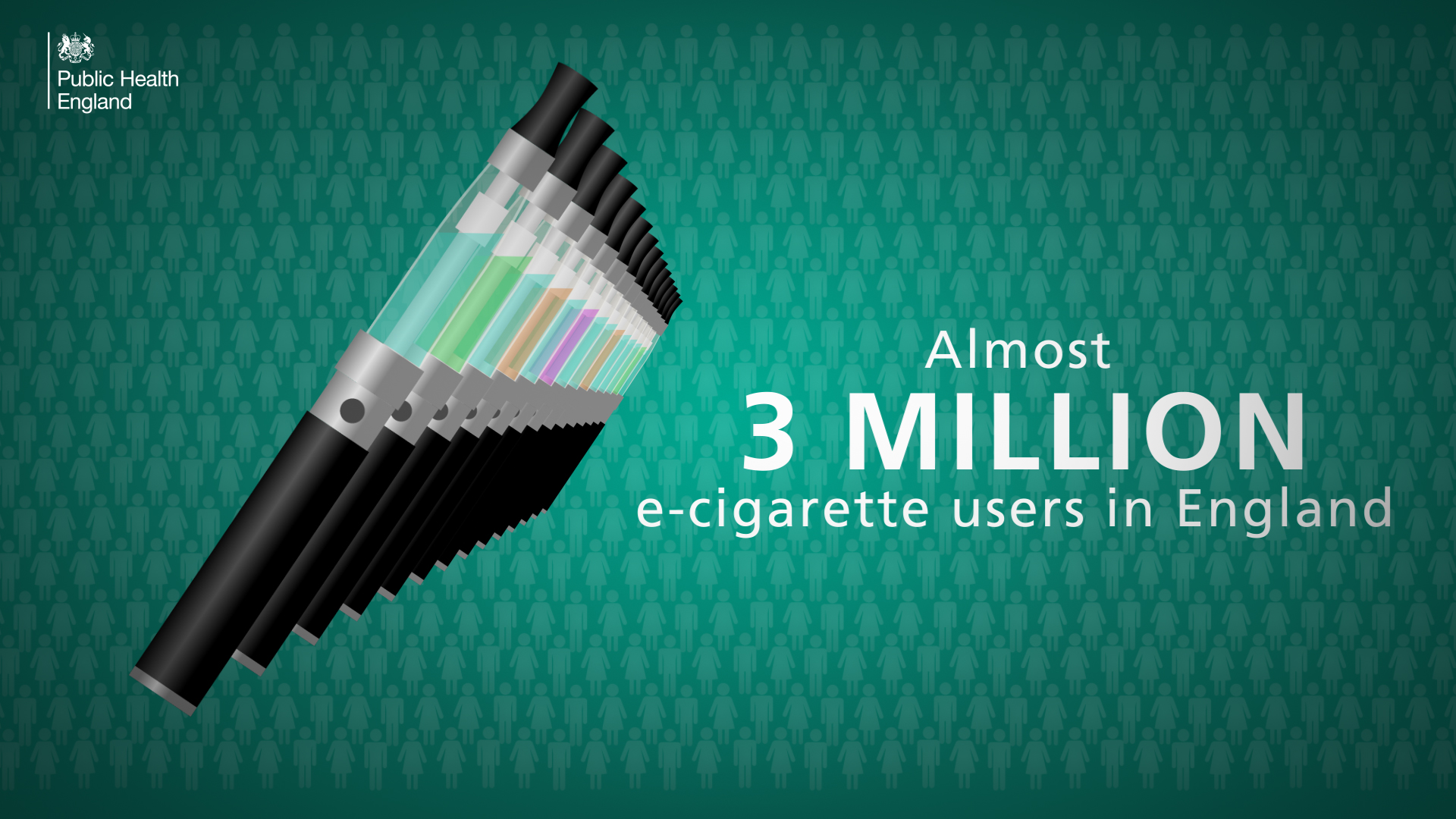
No doubt you will have seen some of the stories in the media recently following the publication of PHE’s latest update of the evidence on e-cigarettes. E-cigarettes do seem to be a bit like Marmite, courting controversy among the public and media alike.
Not surprisingly, there are lots of inaccuracies and misconceptions about e-cigarettes and vaping. This blog looks at some of the most common myths and provides the facts.
Our latest independent e-cigarette review, authored by leading academics in the tobacco control field, focuses on the up-to-date facts about vaping among adults and young people in England.
Despite the sometimes confused, and confusing, media reporting around the safety of e-cigarettes, there is growing consensus around the evidence. While not without some risk, when compared to smoking e-cigarettes are far less harmful.
This view is supported by a number of key bodies, including Cancer Research UK, Action on Smoking and Health, the Royal College of Physicians, the British Medical Association and recently, a major US science body, the National Academies of Sciences, Engineering, and Medicine.
For a fuller picture of the review’s findings please see our blog: E-cigarette evidence update - patterns and use in adults and young people.
MYTH 1 - E-cigarettes give you ‘popcorn lung’
One of the most commonly held concerns is that e-cigarettes might cause ‘popcorn lung’. This came about because some flavourings used in e-liquids to provide a buttery flavour contain the chemical diacetyl, which at very high levels of exposure has been associated with the serious lung disease bronchiolitis obliterans.
The condition gained its popular name because it was initially observed among workers in a popcorn factory.
However, diacetyl is banned as an ingredient from e-cigarettes and e-liquids in the UK. It had been detected in some e-liquid flavourings in the past, but at levels hundreds of times lower than in cigarette smoke. Even at these levels, smoking is not a major risk factor for this rare disease.
MYTH 2 - E-cigarettes aren’t regulated and we don’t know what’s in them
The UK has some of the strictest regulation for e-cigarettes in the world. Under the Tobacco and Related Products Regulations 2016, e-cigarette products are subject to minimum standards of quality and safety, as well as packaging and labelling requirements to provide consumers with the information they need to make informed choices.
All products must be notified by manufacturers to the UK Medicines and Healthcare products Regulatory Agency (MHRA), with detailed information including the listing of all ingredients.
MYTH 3 - E-cigarettes must be harmful as they contain nicotine
Four out of 10 smokers and ex-smokers wrongly think nicotine causes most of the tobacco smoking-related cancer, when evidence shows nicotine actually carries minimal risk of harm to health. Although nicotine is the reason people become addicted to smoking, it is the thousands of other chemicals contained in cigarette smoke that causes almost all of the harm.
E-cigarette vapour does not contain tar or carbon monoxide, two of the most harmful elements in tobacco smoke. It does contain some chemicals also found in tobacco smoke, but at much lower levels.

MYTH 4 - Exposure to e-cigarette vapour is harmful to bystanders
The evidence is clear that exposure to second hand smoke is harmful, which is why the UK has laws prohibiting smoking in enclosed public places and workplaces. These laws do not cover vaping and organisations are free to make their own policies on the use of e-cigarettes on their premises.
E-cigarette liquid is typically composed of nicotine, propylene glycol and/or glycerine, and flavourings. Unlike cigarettes, there is no side-stream vapour emitted by an e-cigarette into the atmosphere, just the exhaled aerosol.
PHE’s 2018 evidence review found that to date, there have been no identified health risks of passive vaping to the health of bystanders. People with asthma and other respiratory conditions can be sensitive to a range of environmental irritants, as well as pollen and cold air and PHE advises organisations to take this into account and to make adjustments where appropriate, when making their own policies on the use of e-cigarettes..
MYTH 5 - E-cigarettes will lead young people into smoking
Our latest report found no evidence so far to support the concern that e-cigarettes are a route into smoking among young people. UK surveys show that young people are experimenting with e-cigarettes, but regular use is rare and confined almost entirely to those who already smoke. Meanwhile, smoking rates among young people in the UK continue to decline.
There is also no evidence to support the assertion that vaping is “normalising smoking”. In the years when adult and youth vaping in the UK were increasing, the numbers of young people believing that it was ‘not ok’ to smoke was accelerating. Of course, PHE will continue to monitor the trends in e-cigarette use alongside those in smoking.
MYTH 6 - E-cigarettes are being used as a Trojan horse – so the tobacco industry can keep people smoking
There is currently no evidence to suggest that e-cigarettes are encouraging people to continue smoking – the picture in the UK suggests the opposite. The proportion of e-cigarette users who are ex-smokers has been increasing over recent years.
Of the 3.2 million adult e-cigarette users in the UK, more than half have completely stopped smoking. A further 770,000 have given up both smoking and vaping. At the same time, quit success rates have been improving and we’re seeing an accelerated drop in smoking rates, currently at a record low of 14.9%in England.

Myth 7 - E-cigarettes don't help you quit smoking
Separate from our review, a major UK NIHR funded clinical trial was published in February 2019. Involving nearly 900 participants, it found that in Local Stop Smoking Services, a standard e-cigarette was twice as effective at helping smokers to quit compared with the quitters’ choice of combination nicotine replacement therapy (NRT). Both groups were provided with behavioural support and those in the e-cigarette group had significantly faster reductions in cough and phlegm.

In summary, e-cigarettes and tobacco cigarettes are not the same and shouldn’t be treated as such. It’s important that England’s seven million smokers are aware of the differences and have accurate information to inform their health decisions. E-cigarettes aren’t completely risk free but carry a fraction of the risk of smoking and are helping thousands of smokers to quit and stay smokefree.
